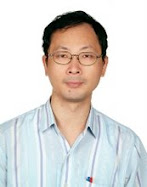Kavli Prize
Kavli Prize
Kavli Prize
##
Kavli Prize for Neuroscience (卡弗里神經科學獎)
##
About Mr. Fred Kavli
Source (資訊來源):
Info cited on 2016-10-26-WD3 (資訊引用於 中華民國105年10月26日) by 湯偉晉
(WeiJin Tang)
#
About Fred Kavli
Fred Kavli: Biograph
FRED KAVLI (1927-2013), a Norwegian-born U.S. citizen, was a
physicist, entrepreneur, business leader, innovator and philanthropist
dedicated to supporting research and education that has a positive, long-term
impact on the human condition.
He established The Kavli Foundation to advance science for
the benefit of humanity. Based in Southern California, the Foundation today
includes an international community of basic research institutes in the fields
of astrophysics, nanoscience, neuroscience, and theoretical physics. Located on
three continents, the institutes are home to some of the most renowned
researchers in their fields. The Foundation has also established and supported
an international program of conferences, symposia, endowed professorships, and
other activities. This includes being a founding partner of the biennial Kavli
Prizes, which recognize scientists for their seminal advances in three research
areas: astrophysics, nanoscience, and neuroscience.
From Eresfjord to California
In September 2007, prior to a special symposium in his
honor, Fred Kavli discussed The Kavli Foundation, the Kavli Institutes, the
Kavli Prizes and his lifelong interest in science.
A naturalized American citizen, Kavli was born in 1927 on a
small farm in Eresfjord, Norway - a village nestled in the mountains along the
Eira River. Kavli would later recall these early days as giving birth to his
interest in science, where he grew up experiencing “the world at its most
magnificent."1 This interest would
blossom further while studying physics at the Norwegian Institute of Technology
(now known as the Norwegian University of Science and Technology in Trondheim).
As he recalled in remarks prepared for the York Science Festival in 2007, “In
those days, I used to ski across the vast white expanses of a quiet and lonely
mountaintop. Sometimes the northern lights would dance across the sky and down
to the white-clad peaks. During those moments, I pondered the mysteries of the
universe, the planet, nature, and of man. And I would never lose that
fascination.”2
Building his business acumen, Kavli financed his studies
with proceeds from a small business he and his brother, both teenagers, ran
during World War II, making wood briquettes that could be used as fuel for
modified automobiles. Immediately upon completing his studies in 1955 and
receiving an engineering degree, he left for Canada and one year later came to
the United States. After two years in California, he built upon his
entrepreneurial spirit and experience and founded the Kavlico Corporation in
Los Angeles in 1958 - later relocated to Moorpark, California. As Kavli
recalled in 2000, "Venture capital was not as easy to come by as it is
now." To secure initial backing for his business idea, he placed an ad in
the Los Angeles Times, "Engineer seeks financial sponsor to start own
business."3 Under his leadership, the company would become one of the
world's largest suppliers of sensors for aeronautical, automotive and
industrial applications with its products found in such landmark projects as
the SR-71 Blackbird and the Space Shuttle.
Establishing The Kavli Foundation
2008 documentary that appeared on NRK/Norwegian Broadcast
Corp. (Courtesy of Nordisk Film, Norway.
Director/producer Stig Andersen, 2008)
The company would receive many distinguished awards under
Kavli's leadership and patent numerous technological breakthroughs. He remained
CEO and sole shareholder of the company until the company was sold in 2000. He
subsequently established The Kavli Foundation to support scientific research
aimed at improving the quality of life for people around the world. “I always felt strongly that I wanted to do
something of value for mankind. To start a business and be successful, it’s
good. But that was not my goal at all,”4 he would later say.
Over time, the Foundation has established and endowed
research institutes at leading universities worldwide, focusing on the areas of
astrophysics, nanoscience, neuroscience and theoretical physics. Today, there
are seventeen such institutes and there will be more in the years to come. The
Foundation has endowed research institutes in neuroscience at Columbia
University, Yale University, the University of California, San Diego and the
Norwegian University of Science and Technology; in nanoscience, there are Kavli
Institutes at the California Institute of Technology, Cornell University,
Harvard University, the Delft University of Technology, and the University of
California, Berkeley; in astrophysics and cosmology, the institutes are at
Stanford University, the University of Chicago, Massachusetts Institute of
Technology, the University of Cambridge, Peking University, the University of
Tokyo; and in theoretical physics, the institutes are at the University of
California, Santa Barbara and the Chinese Academy of Sciences. The Foundation
has also endowed seven university professorial chairs, sponsors science
symposia and workshops, supports initiatives to engage the public in science
and that help scientists themselves be better communicators, and supports
excellence in science journalism. This includes endowing the AAAS Kavli Science
Journalism Awards administered by the American Association for the Advancement
of Science.
Discussing his interest in astrophysics, nanoscience and
neuroscience, Kavli said, “The Kavli Institutes will pursue science at astronomical
scales – the universe; at the most infinitesimal scales – atoms and molecules;
and in the most complex of all things – the human brain.”5 He would also frame
these scientific areas as the biggest, the smallest and the most complex. “I
have selected these areas of emphasis because I believe they provide the
greatest opportunity for major scientific breakthroughs and will have long
range benefits for humanity.”6
Explaining in 2008 his broader interest in basic science
research, he said, “The Kavli Foundation supports basic science because we
believe in its long-range benefit to humanity. We are looking for benefits that
may lie far into the future, benefits that may be hard to predict, but as we
look at the past, the benefits of science have been proven over time. The
fruits of research are not always immediate and are often not predictable.
Often the benefits are the result of unpredictable outcomes of an exploration
that was initially motivated purely by intellectual curiosity.”7
Establishing The Kavli Prizes
Fred Kavli at the inaugural Kavli PrizeFred Kavli addresses
the audience at the Inaugural Kavli Prize Ceremony. (Scanpix)
Starting in 2008, the Foundation launched a series of
science prizes to recognize scientists for their seminal advances in
astrophysics, nanoscience and neuroscience. Consisting of a scroll, a gold
medal and a cash award of one million dollars, a Kavli Prize in each of these
areas is awarded every two years. The Kavli Prizes are presented by the King of
Norway in a ceremony in Oslo, Norway and are a partnership between The Kavli
Foundation, the Norwegian Academy of Science and Letters, and the Norwegian
Ministry of Education and Research. In acknowledgement of their achievement,
U.S. laureates have been consistently invited to meet the President in the Oval
Office in recognition of the importance of science in achieving a better and
more prosperous society.
In addition to establishing institutes and prizes, the
Foundation has brought together scientists at meetings that facilitate open
dialogue and an exchange of ideas. These meetings have precipitated such major
initiatives as the Brain Activity Map proposal, which was a major catalyst for
President Obama's Brain Research through Advancing Innovative Neurotechnologies
(BRAIN) Initiative announced in April 2013.
Honors and Recognition
Fred Kavli recieves the Carnegie Medal of PhilanthropyFred
Kavli receiving the Carnegie Medal of Philanthropy (Credit: Carnegie
Corporation)
Fred Kavli was a Fellow of the American Academy of Arts and
Sciences, a member of the Norwegian Academy of Technological Sciences, and a
former member of the U.S. President's Council of Advisors on Science and
Technology. A former member of the University of California President's Board
on Science and Innovation, he was a Trustee of the University of California,
Santa Barbara (UCSB) Foundation. His many honors included receiving the Royal
Norwegian Order of Merit for Outstanding Service and honorary doctorates from
the Norwegian University of Science and Technology, Northwestern University,
and the University of Oslo. In 2011 he received the Bower Award for Business
Leadership from the Franklin Institute, one of the oldest science education
centers in the United States, and the Carnegie Medal of Philanthropy, which is
given biennially to one or more individuals who, like Andrew Carnegie, have
dedicated their private wealth to public good, and who have sustained
impressive careers as philanthropists.
In addition to supporting scientific research and education,
Kavli's philanthropic activities included the Fred Kavli Theatre for Performing
Arts at the Thousand Oaks Civic Arts Plaza, as well as other projects.
Fred Kavli passed away on November 21, 2013 and was laid to
rest in his hometown of Eresfjord, Norway.
Timeline
1927 - Born in Eresfjord, Møre og Romsdal county, Norway
1955 - Graduates with a degree in theoretical physics at the
Norwegian Institute of Technology in Trondheim
1956 - Arrives in the United States
1958 - Founds the Kavlico Corporation in Los Angeles – later
relocated to Moorpark, California
2000 - Establishes The Kavli Foundation and The Kavli
Operating Institute (now merged with The Kavli Foundation)
2002 - Establishes the first Kavli Institute; Kavli
Institute for Theoretical Physics (KITP) at the University of California, Santa
Barbara
2006 - Elected Fellow of the American Academy of Arts and
Sciences
2006 - Receives the Royal Norwegian Order of Merit for
Outstanding Service
2008 - Receives Tekna Gold Medal
2008 - Receives an honorary doctorate, Doctor Honoris Causa,
from the Norwegian University of Science and Technology
2008 - First Kavli Prizes awarded
2009 - Receives an honorary Doctor of Science degree from
Northwestern University
2011 - Receives the Bower Award for Business Leadership from
the Franklin Institute
2013 - Fred Kavli passes away at the age of 86
#























